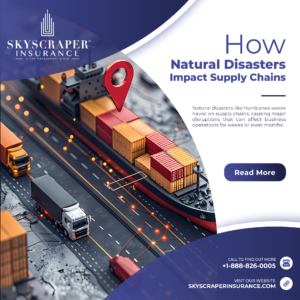In 2023, the workers’ compensation market demonstrated significant strength and stability, marking another year of impressive performance for private carriers. According to data from the National Council on Compensation Insurance (NCCI), this sector achieved remarkable results, continuing a decade-long trend of profitability.
Key Metrics and Trends
Combined Ratio and Premiums:
Private workers’ compensation carriers recorded a combined ratio of 86 for the 2023 calendar year, maintaining the combined ratio below 90 for the seventh consecutive year. This consistent performance underscores the financial health and operational efficiency within the industry. Moreover, workers’ compensation premiums saw a modest increase, rising to $43 billion, which is a 1% uptick from 2022. This growth, albeit slight, reflects the sector’s resilience and capacity for steady expansion.
Reserve Redundancy:
The reserve redundancy in the workers’ compensation sector expanded to $18 billion, highlighting the industry’s robust financial foundation. This redundancy acts as a financial buffer, ensuring that carriers can cover future claims and obligations without significant financial strain.
Market Dynamics:
The voluntary market carriers showcased their strength as the residual market’s share of the workers’ compensation line continued its downward trajectory. The residual market’s share dropped from 6.1% in 2022 to 5% in 2023. For context, the residual market held a 12.5% share in 2003. This decline indicates a healthier voluntary market where more businesses can secure workers’ compensation insurance through regular market channels rather than relying on state-assigned risk pools.
Claim Frequency and Severity
In 2023, the frequency of lost-time claims decreased by 8%, which is twice the rate of the long-term average decline. This reduction in claim frequency is a positive indicator, suggesting improvements in workplace safety and risk management practices. Additionally, the severity of claims showed moderation last year, with NCCI reporting a 2% rise in medical-claim severity and a 5% rise in indemnity-claim severity. While these increases are notable, they are relatively modest, indicating controlled growth in claim costs.
Opioid Utilization and Prescription Trends
Opioid utilization in workers’ compensation claims experienced one of its most significant declines in recent years. According to the Enlyte Group, LLC, opioid utilization per claim dropped by 9.7%, and the cost per claim decreased by 7.2%. This decline reflects ongoing efforts to address and mitigate opioid dependence within the workers’ compensation system. However, the utilization of alternatives to opioids also saw decreases, albeit to a lesser extent. Non-steroidal anti-inflammatory drugs (NSAIDs) saw a 3% drop in utilization, while anticonvulsants declined by 7.4%.
Over the past year, eight of the top ten therapeutic drug classes experienced an increase in prescription costs. Notably, two classes saw costs rise by more than 10%. Enlyte reported that utilization per claim fell in every drug class except for medications treating migraines. Migraine medications experienced a 17% increase in utilization and a 10.2% rise in cost, while respiratory medications had the largest cost increase at 14.7% per prescription. These trends highlight the evolving landscape of pharmaceutical management in workers’ compensation.
Highest Workers’ Comp Costs by State
The slideshow above reviews the states with the highest workers’ comp costs based on the Workers’ Compensation Index Rate, which is a biennial survey conducted by the Oregon Department of Consumer & Business Services’ Information Division. The index rate is calculated per $100 of payroll and serves as the basis for determining final premiums for workers’ compensation insurance.
Key States with High Workers’ Comp Rates:
- California: Known for its high cost of living and stringent regulatory environment, California consistently ranks among the states with the highest workers’ comp rates.
- New York: With its dense population and high wage rates, New York also faces significant workers’ comp costs.
- New Jersey: Similar to New York, New Jersey’s high labor costs contribute to its position on this list.
- Alaska: The remote and hazardous nature of many jobs in Alaska drives up the cost of workers’ compensation insurance.
These states face higher costs due to a combination of factors including higher average wages, cost of living, and regulatory requirements. Businesses operating in these states must account for these higher insurance costs in their overall risk management and financial planning strategies.
Conclusion
The workers’ compensation market continues to demonstrate resilience and profitability, with key metrics showing stable or positive trends. However, businesses must remain vigilant about evolving risks and regulatory changes that can impact their insurance costs. By staying informed and proactive, companies can better navigate the complexities of workers’ compensation insurance and ensure they are adequately protected.
For businesses looking to optimize their workers’ compensation strategies, it is crucial to work with experienced insurance professionals who can provide tailored advice and solutions. At Skyscraper Insurance, we are committed to helping our clients understand and manage their workers’ compensation needs, ensuring they are prepared for whatever challenges lie ahead.
Stay tuned for more insights and updates on the latest trends in workers’ compensation insurance.
We Share Your Vision For A Better Tomorrow.




